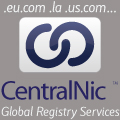Translation principles and framework
ICANN translation principles
Back to main Translation page
ICANN will provide timely and accurate translations, and move from an organisation that provides translation of texts to one that is capable of communicating comfortably with a range of different languages.
The translation framework comprises a four-layer system:
- The bottom layer contains those specific documents and
publications that address the organisation’s overall strategic
thinking. They will be translated into an agreed block of languages. -
The next layer contains a class of documents that ICANN undertakes to
provide in different languages to allow interaction within ICANN
processes by non-English speakers. - The third layer comprises documents suggested by ICANN staff as being helpful or necessary in ongoing processes; and documents requested by the Internet community for the same reasons. These documents will be run through a translation approval system.
- The top layer is where the
community is encouraged to use online collaborative tools to provide
understandable versions of ICANN materials as well as material
dynamically generated by the community itself. ICANN will provide the
technology for community editing and rating, and a clear and
predictable online location for this interaction to occur. It will also
seek input from the community to review the tools.
English will remain the operating language of ICANN for business consultation and legal purposes.
Every effort will be made to ensure equity between comments made in languages other than English and those made in English. If it is not possible to arrange the release of particular documents in the agreed languages at the same time, then each language will be provided with the same time period in which to make comments.
ICANN will adopt the International Organisation for
Standardisation’s 639-2 naming system for identifying and labeling particular languages.
Back to main Translation page
Translation policy for ICANN
As part of a number of draft management operating principle documents at its San Juan meeting in June 2007, ICANN produced a translation framework.
That document outlined the principles and broad framework for
translating documents within the ICANN system, but did not go into real
or practical solutions. The purpose of this note is to recognise that
translation is an increasingly important issue within the Internet
community and so outline the real, practical steps that ICANN is taking
with respect to working with other languages.
In arriving at the translation framework, ICANN’s general manager of
public participation was charged with: reviewing the recommendation
contained within the OneWorldTrust’s review of ICANN; reviewing the
documentation referred to within that recommendation; reviewing ICANN’s
current translation efforts; and talking to people both within and
outside the community in an effort to understand translation efforts
put in place by other international organisations.
An internal review document was produced and ran through three
iterations over the course of four meetings between March and June
2007. Decisions were taken during a meeting on 15 June 2007 about the
best way forward.
The finished internal report suggested the four-layer translation
system that is reproduced in the translation framework. Until the
translation plan becomes more specific and detailed, ICANN can’t be
certain about budget requirements, service levels (i.e. precise
timelines) and cost to the community. In the coming fiscal year, ICANN
has more than doubled the funds available for translation.
The report made several conclusions and recommendations. They were:
Conclusions:
- The current approach is unsustainable
- ICANN needs a demand-driven & flexible translation system
- There needs to be a single system and a single point-of-contact
- The costs and methods of translation need to be carefully reviewed
Recommendations:
- A four-tier translation stack
- Introduction of machine translation with wiki-style editing and community-rating
- Produce a community-request system
- Hire a consultant with appropriate expertise
- Review the possibility of an in-house translation team
- Start on the process immediately
The translation issue is a very complex one and ICANN recognises
that it does not have the skills in-house to produce a comprehensive
and equitable translation policy.
ICANN will therefore hire someone with the appropriate expertise as
soon as possible in order to review the situation and provide a report
on how the organisation can move forward as efficiently as possible.
Either that report or an interim report will be produced for the Los
Angeles meeting at the end of October 2007. That review will include:
- What ICANN should translate and in which languages
- What the best system is to provide fast and accurate translations
In the meantime, ICANN has created an internal translation
co-ordination committee with members from across the organisation in
order to:
- Identify and hire the expert and prepare the groundwork for his/her review
- Discover what the level of demand is for different translations
- Review the different needs and requirements for translation across departments
- Work out the implications of a broad, systemic translation policy
- Talk to others outside the organisation, both within the Internet
community and those in the wider world, in order to build up awareness
throughout ICANN and its community of translation issues
In terms of pragmatic work, the committee will also:
- Implement machine translation, wiki-style editing and community rating
- Produce an effective system for registering community interest in particular translations
- Produce a multi-lingual glossary
ICANN will produce regular updates on its progress on translation
here on the ICANN blog and review where and when it can make the most
of existing expertise within the Internet community.
Back to main Translation page
















